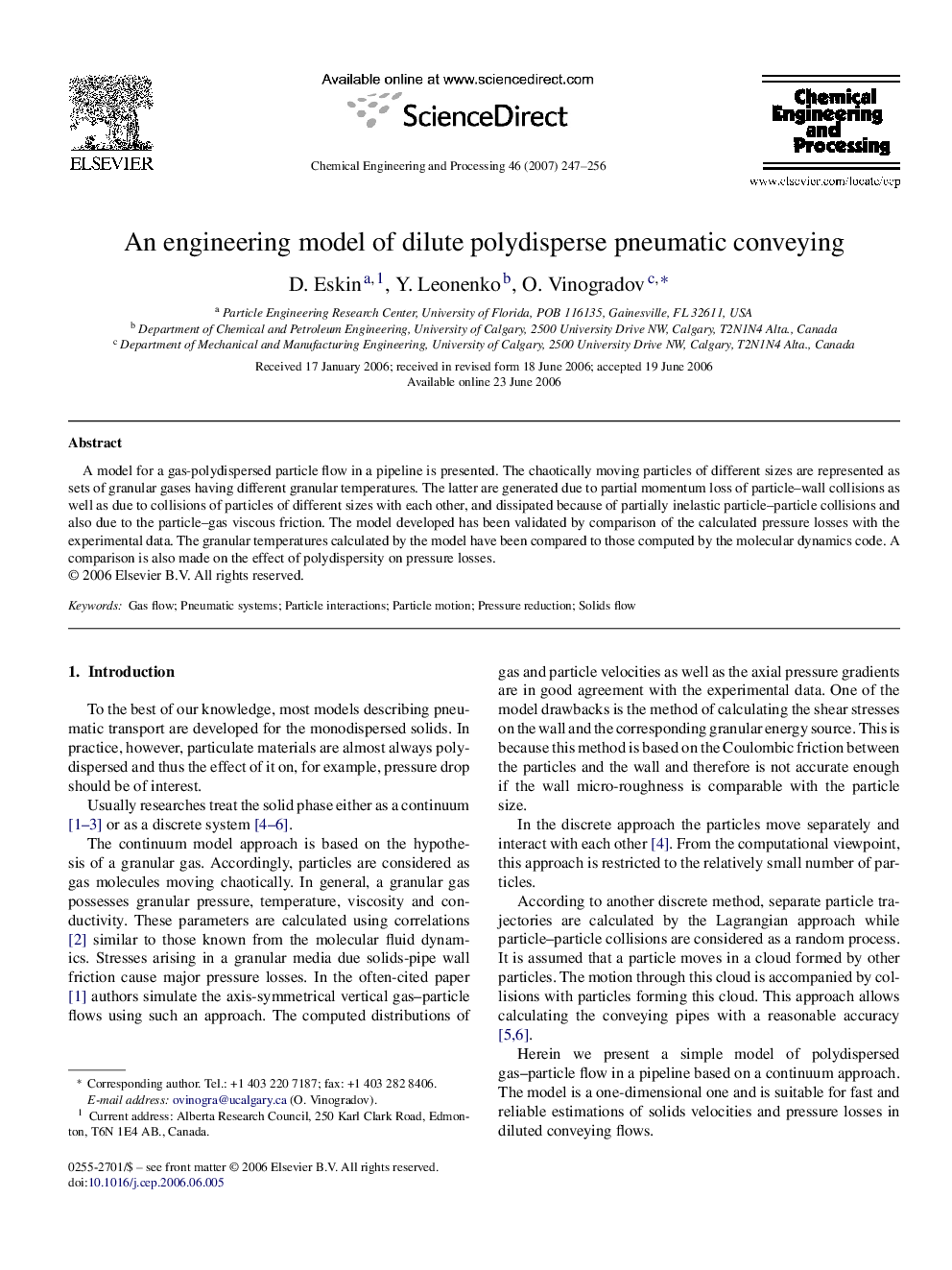| Article ID | Journal | Published Year | Pages | File Type |
|---|---|---|---|---|
| 688339 | Chemical Engineering and Processing: Process Intensification | 2007 | 10 Pages |
A model for a gas-polydispersed particle flow in a pipeline is presented. The chaotically moving particles of different sizes are represented as sets of granular gases having different granular temperatures. The latter are generated due to partial momentum loss of particle–wall collisions as well as due to collisions of particles of different sizes with each other, and dissipated because of partially inelastic particle–particle collisions and also due to the particle–gas viscous friction. The model developed has been validated by comparison of the calculated pressure losses with the experimental data. The granular temperatures calculated by the model have been compared to those computed by the molecular dynamics code. A comparison is also made on the effect of polydispersity on pressure losses.
